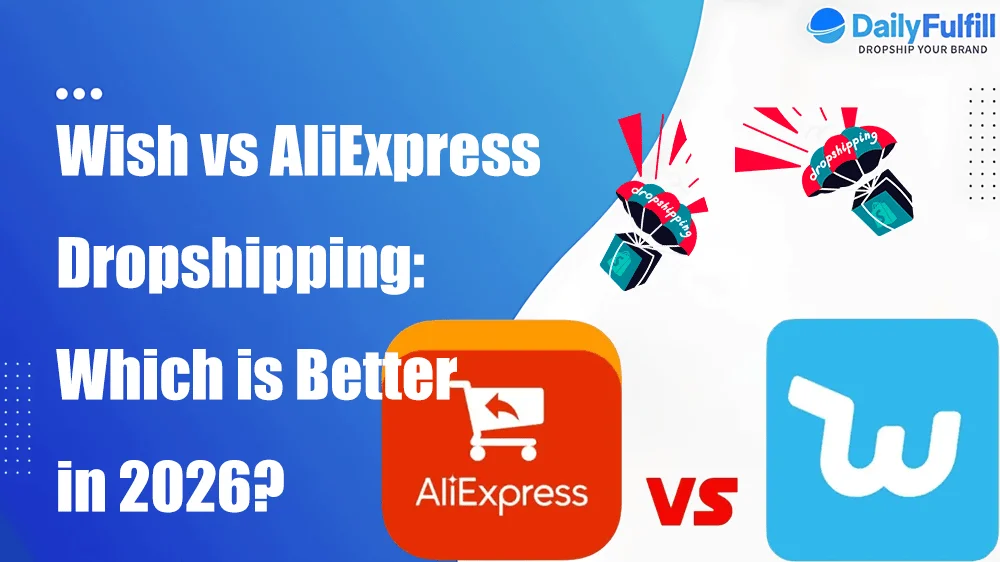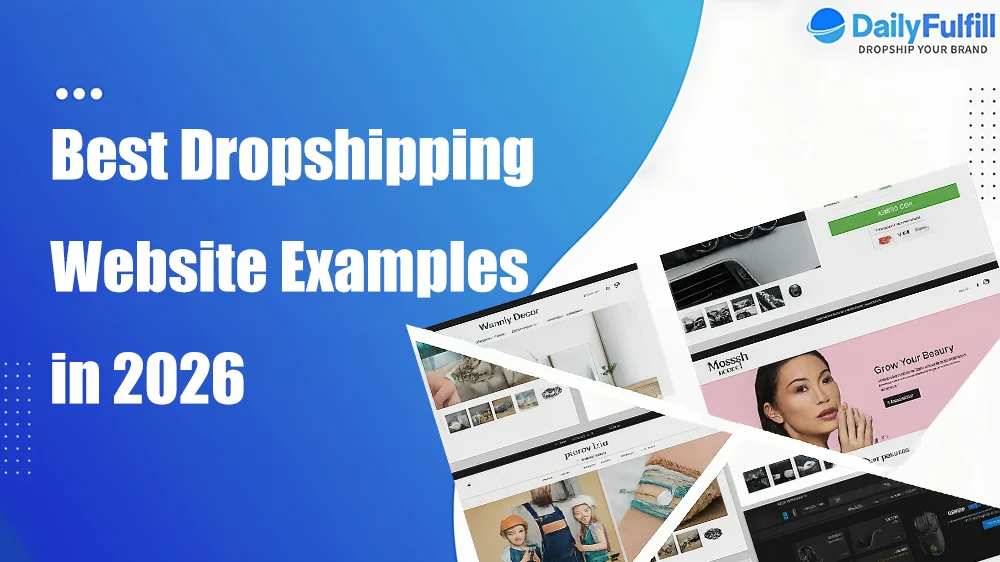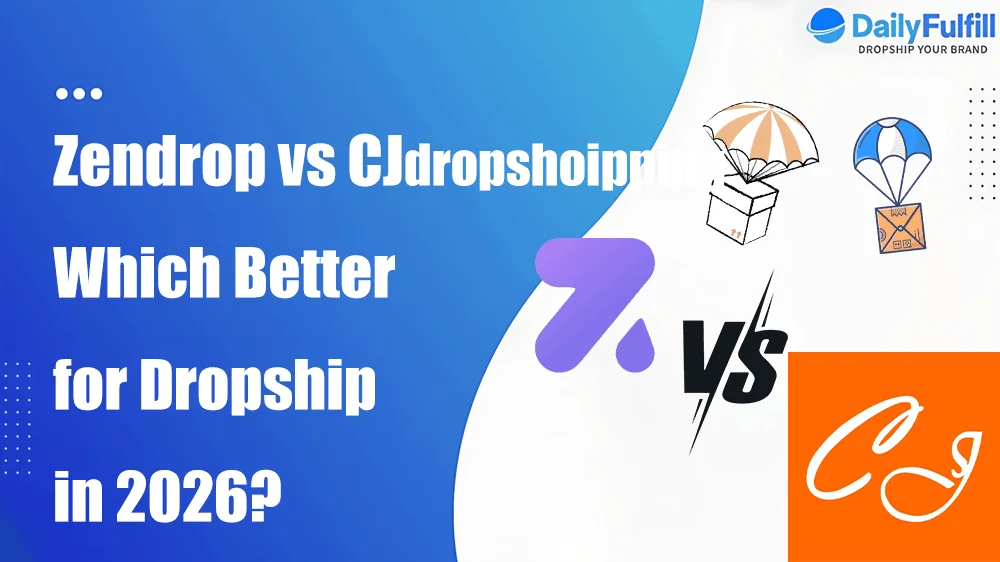
Etsy vs Shopify: Which is Better for you in 2026
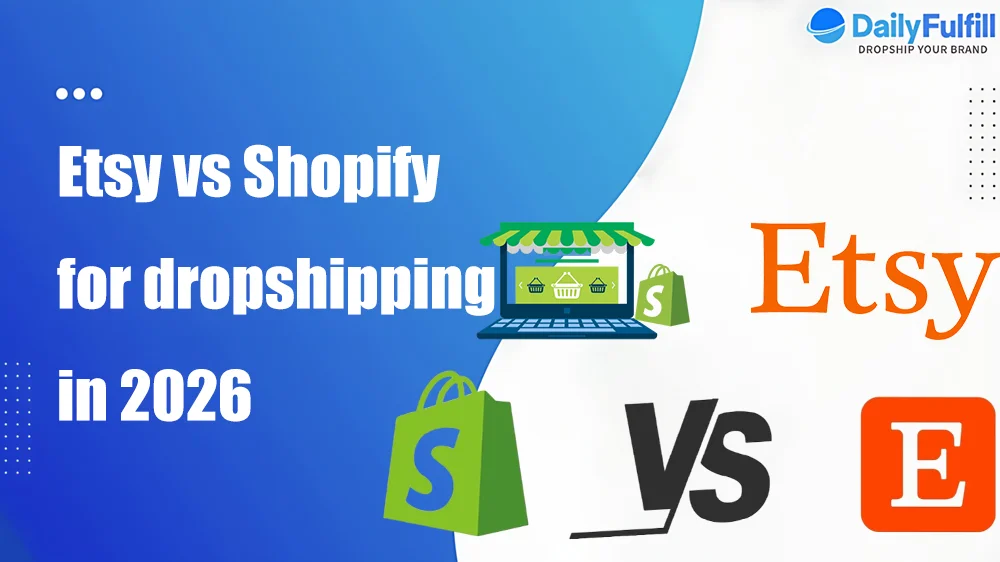
Etsy offers a marketplace model with 95.5 million buyers and 8.13 million sellers. You get lower upfront costs and quick access to an audience. Shopify gives you full control over your store, lets you build your brand, and offers lower transaction fees. If you’re looking to dropship handmade, unique, and creative products in 2026, you might be wondering whether Etsy or Shopify is the better choice.
In this article, we’ll explore Etsy vs Shopify to help you decide which one is the best fit for your business
Overview
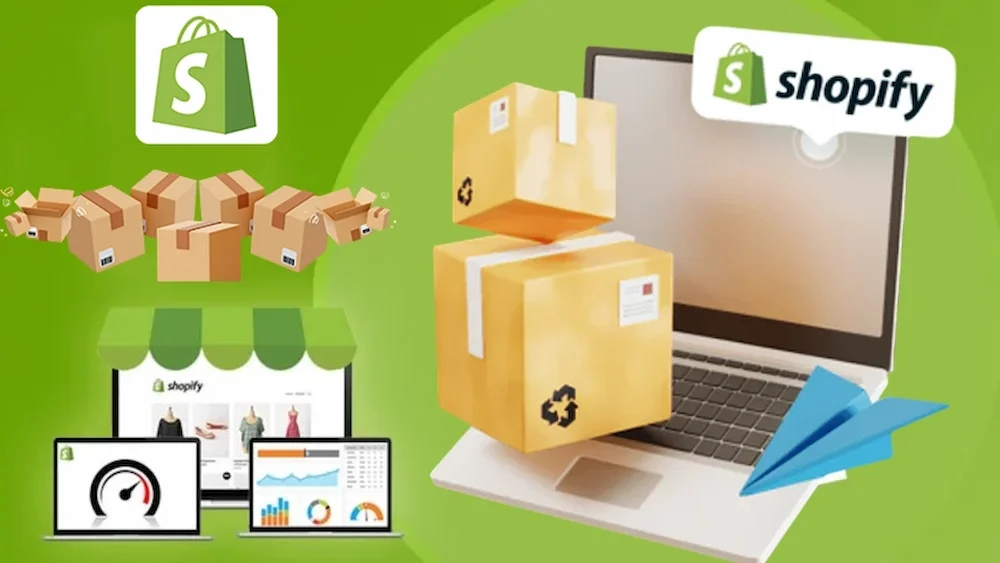
Etsy
Etsy gives you a marketplace designed for artisans and creators. You can sell handmade and vintage items to a large built-in audience. The platform makes it easy to start your business. You add products quickly and do not need much upfront investment. You focus on making your products while Etsy handles most of the shop maintenance. Many sellers choose Etsy because it simplifies the process and helps you reach buyers who love unique and creative goods.
Main strengths of Etsy:
Simple setup and fast product listing
Minimal upfront costs
Access to millions of buyers
Focus on handmade and vintage items
Shopify
Shopify lets you build your own online store. You get full control over your branding and customer experience. The platform offers many customization options, so you can design your store the way you want. Shopify supports growth with features like multiple sales channels and integrations. You can manage your products, payments, and marketing tools all in one place. If you want to scale your business and create a unique brand, Shopify gives you the tools to do it.
Main strengths of Shopify:
Full control over your store’s look and feel
Extensive customization options
Scalable features for growing businesses
Support for multiple sales channels
Key Differences
Platform | Seller Autonomy | Description |
|---|---|---|
Etsy | Limited | |
Shopify | Full | You create an independent store, giving you full control over branding, customer experience, and store design. |
Tip: If you want a quick start and easy access to buyers, Etsy works well. If you want to build your own brand and grow your business, Shopify gives you more freedom and flexibility.
Pricing
Etsy Fees
Etsy uses a pay-as-you-go model. You do not pay a monthly fee to open a basic shop. Instead, you pay small fees as you list and sell products. Each product listing costs $0.20 and stays active for four months or until it sells. When you make a sale, Etsy charges a 6.5% transaction fee on the total order amount. You also pay a payment processing fee, which is usually 3% plus $0.25 per transaction. If you want extra features, you can choose Etsy Plus for $10 per month or use paid advertising tools.
Etsy Fee Breakdown:
Fee Type | Amount |
|---|---|
Monthly Fee | $0 (Basic) / $10 (Etsy Plus) |
Listing Fee | $0.20 per item |
Transaction Fee | 6.5% of order amount |
Payment Processing Fee | 3% + $0.25 per transaction |
Optional Fees | Ads, Offsite Ads, Upgrades |
📝 Note: Etsy’s fees add up as you sell more items, so you should track your costs as your shop grows.
Shopify Fees
Shopify uses a subscription model. You pay a monthly fee to run your store. The Basic plan starts at $29 per month, with higher plans offering more features at $79 and $299 per month. Shopify does not charge listing fees, so you can add as many products as you want. When you make a sale, Shopify charges a payment processing fee. If you use Shopify Payments, the fee is 2.9% plus $0.30 per transaction on the Basic plan. If you use a different payment provider, you may pay an extra transaction fee. Shopify also offers premium themes, apps, and other optional upgrades.
Shopify Fee Breakdown:
Fee Type | Amount (Basic Plan) |
|---|---|
Monthly Fee | $29 |
Listing Fee | $0 |
Transaction Fee | 0% with Shopify Payments |
Payment Processing Fee | 2.9% + $0.30 per transaction |
Optional Fees | Apps, Themes, POS Pro |
💡 Tip: Shopify’s monthly fee stays the same no matter how many products you list or sell.
Cost Comparison
You should compare the total costs for each platform based on your sales volume. Etsy works well for new sellers with a small number of products. You pay only when you list or sell an item. Shopify’s monthly fee can be higher at first, but the transaction fees are lower, especially as your sales grow.
Here is a side-by-side look at the main pricing features:
Feature | Etsy Pricing Structure | |
|---|---|---|
Monthly Fees | Yes, varies from $5 to $2,300+ | No monthly fees (Basic) |
Listing Fees | N/A | $0.20 per listing, renewed every 4 months |
Transaction Fees | 0% with Shopify Payments; varies with others | 6.5% of total order amount |
Payment Processing Fees | Varies by plan, e.g., 2.9% + $0.30 | 3% + $0.25 per transaction |
Optional Fees | Premium themes, apps, POS Pro, etc. | Etsy Ads, Offsite Ads, Etsy Plus ($10/month) |
Let’s see how these fees add up with real numbers. If you sell 10 items at $15 each, your total monthly cost on Etsy is about $16.50. On Shopify, the cost is about $36.65. If you sell 100 items, Etsy’s total monthly cost rises to $162.75, while Shopify’s cost is about $102.80. This means Shopify becomes more cost-effective as your sales increase.
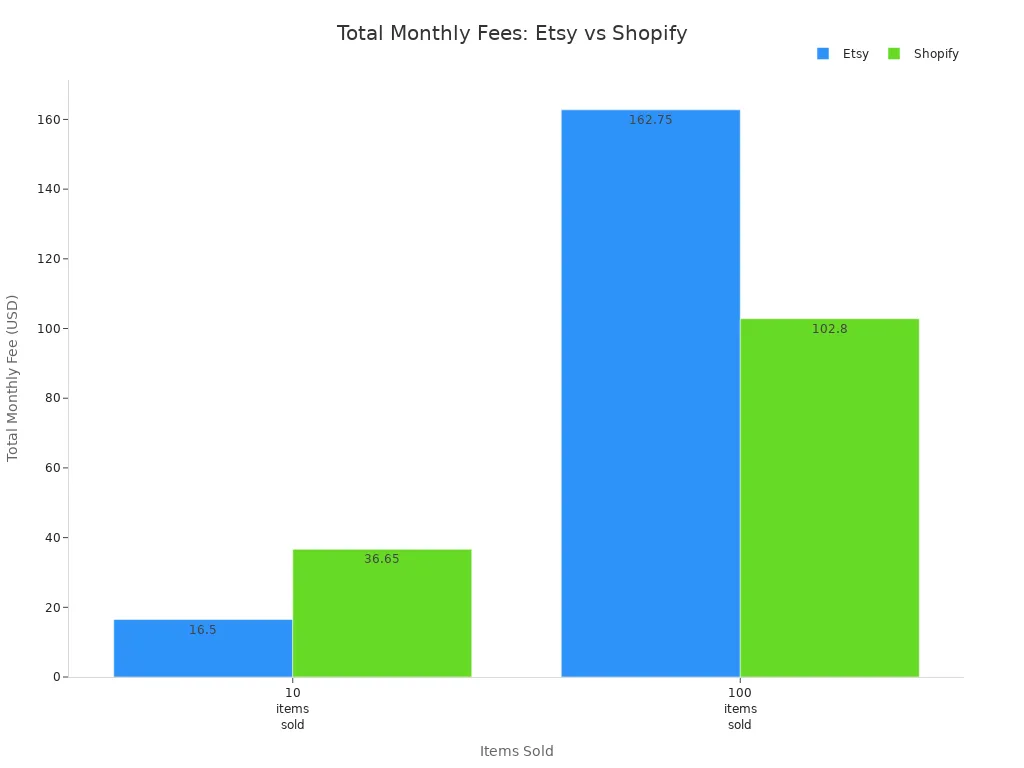
Monthly Cost Comparison Table:
Platform | Monthly Cost (Approx.) | Additional Fees |
|---|---|---|
Shopify | Subscription fees based on plan | |
$79 (Shopify Plan) | ||
$299 (Advanced Plan) | ||
Etsy | $0.20 per listing | 6.5% transaction fee + 3% + $0.25 payment processing fee |
$10 (Etsy Plus) | Optional upgrades and advertising fees |
📊 Summary: Etsy offers lower upfront costs and works well for small shops or new sellers. Shopify’s monthly fee pays off as your business grows and your sales increase. You should choose the platform that matches your sales volume and business goals.
Ease of Use
Getting Started
You want to launch your online store quickly. Etsy makes this process simple. You can open your Etsy shop in just a couple of hours. You only need to create an account, add your products, and set up payment details. Automation tools help you import items in bulk and optimize your listings. Many sellers find Etsy ideal for creative dropshippers and print-on-demand shops. You get a built-in audience and can focus on personalized products.
Shopify also offers a straightforward setup. You sign up, choose a theme, and add your products. Shopify guides you through onboarding steps, so you know what to do next. You can customize your store’s look and use automation to speed up workflows. Setting up a branded store on Shopify may take more time if you want a unique design. Both platforms let you start selling fast, but Etsy is often quicker for beginners.
Quick Comparison:
Etsy: Launch your shop in hours, simple steps, built-in audience.
Shopify: Guided setup, more customization, takes longer for branding.
💡 Tip: If you want to start selling today, Etsy helps you get online fast. Shopify gives you more control if you want to build a custom store.
User Experience
You want a platform that feels easy to use every day. Etsy offers a simple dashboard. You manage your products, orders, and messages in one place. Many first-time sellers say Etsy feels like starting in the kiddie pool. You learn how to sell online without feeling overwhelmed.
“Etsy is undoubtedly a great place to learn how to sell online if you’ve never done it before. It’s like, if you don’t know how to swim, Etsy is like starting at the kiddie pool.”
Shopify also makes things easy. You get a clean dashboard and helpful guides. Both platforms walk you through each step, so you do not get lost. On a broad scale, users say Etsy and Shopify are equally easy to use. You can manage your storefront, track sales, and update products with just a few clicks.
Etsy: Simple dashboard, easy for beginners, quick learning curve.
Shopify: Clean interface, guided steps, flexible for advanced users.
📝 Note: Both Etsy and Shopify help you get started and manage your shop with ease. Choose the one that matches your comfort level and business needs.
Features
Customization
You want your store to stand out. Shopify gives you full creative control. You can pick from many themes, change layouts, adjust colors, and select fonts. You can even edit the code if you know how. This lets you build a store that matches your brand and vision. Etsy keeps things simple. Every shop uses a similar layout. You can add a banner and avatar, but you cannot change much else. If you want a unique look, Shopify is the better choice.
🖌️ Tip: Shopify’s design tools help you create a store that feels truly yours. Etsy’s setup works best if you prefer a quick and easy start.
Product Management
Managing products is important for your business. Shopify gives you advanced tools. You can track inventory, use AI to write descriptions, and sell on many channels. Etsy focuses on handmade and vintage items. You list products easily and connect with other artisans. Both platforms help you organize your shop, but Shopify offers more control.
Feature | Shopify | Etsy |
|---|---|---|
Control and Customization | Limited customization | |
Setup | Standalone website | Marketplace listing |
Audience Reach | Tools to drive traffic | Built-in audience |
Shopify Features:
Customizable themes
Inventory management
Omnichannel selling
AI content creation
Shop app access
Etsy Features:
Marketplace for handmade goods
SEO for listings
Analytics for orders
Community connection
Payments
Shopify supports many payment gateways. You can use PayPal, Stripe, Authorize.net, and more than 100 other options. This gives you flexibility to choose what works best for you. Etsy offers fewer choices. You can use PayPal and direct checkout. If you need more payment options, Shopify is the better platform.
💳 Note: Shopify’s wide range of payment gateways helps you serve customers from different regions.
Marketing Tools
Marketing helps you grow your business. Etsy gives you tools like Etsy Ads, Offsite Ads, and eRank for SEO. These boost your product visibility and help you reach new buyers. Shopify lets you run email campaigns, offer discount codes, and recover abandoned carts. You can use advanced analytics to track sales and improve your marketing. Shopify’s tools help you build strong customer relationships and encourage repeat sales.
Platform | Marketing Tool | Functionality | Impact on Sales Growth |
|---|---|---|---|
Etsy | Etsy Ads | Targeted keywords | Increases traffic and sales |
Etsy | Offsite Ads | Promotes listings outside Etsy | Attracts new customers |
Shopify | Email Marketing | Engages customers | Drives repeat sales |
Shopify | Discount Codes | Promotions | Boosts conversion rates |
Shopify | Abandoned Cart Recovery | Reminds customers | Recovers lost sales |
📈 Shopify’s marketing tools give you more freedom to grow your business. Etsy helps you get noticed, but Shopify helps you build lasting customer loyalty.
Security
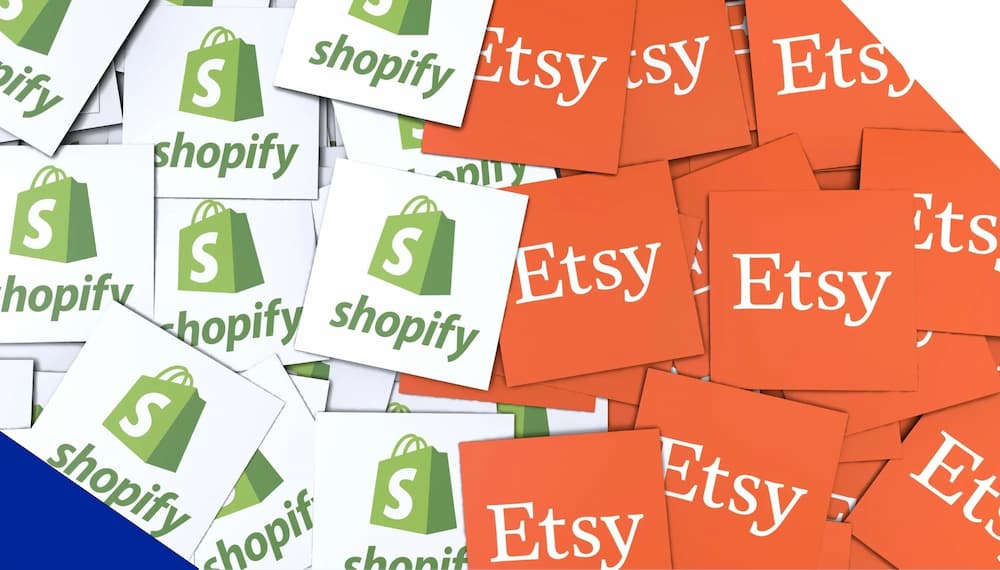
Etsy Security
You want to keep your shop and customer data safe. Etsy uses several security measures to protect you and your buyers. The platform enforces strong password policies. You must create complex passwords and update them regularly. Etsy monitors login attempts to spot suspicious activity. If someone tries to access your account without permission, Etsy can alert you and block the attempt.
Etsy also uses authentication methods. You can enable two-factor authentication for extra protection. This means you need a code from your phone to log in, not just a password. Etsy reviews third-party apps before allowing them on the platform. This helps prevent apps from accessing your data without approval.
🔒 Tip: Always use two-factor authentication and choose strong passwords for your Etsy account.
Shopify Security
Shopify gives you advanced security tools to protect your store. You control who can access your shop with Role-Based Access Control (RBAC). You assign permissions to staff members, so only trusted people can see sensitive information. Shopify enforces strong password policies and monitors login attempts. If someone tries to break in, Shopify detects it early.
Shopify uses secure API key management. You can connect apps and services safely. The platform reviews third-party apps to make sure they meet strict security standards. Shopify also offers PCI compliance, which means your customers’ payment information stays safe during transactions. With Shopify Protect for Shop Pay, you get chargeback protection against fraud for eligible purchases.
Security Measure | Etsy | Shopify |
|---|---|---|
Password Policy | Yes | Yes |
Two-Factor Authentication | Yes | Yes |
Login Monitoring | Yes | Yes |
Role-Based Access Control | No | Yes |
API Security | Limited | Advanced |
PCI Compliance | Yes | Yes |
Buyer Protection | Basic | Shopify Protect available |
🛡️ Shopify gives you more control over staff access and offers extra protection for payments. Etsy keeps things simple but still protects your shop and buyers.
Customer Service
Thanksgiving means more questions and problems. You want your support team ready to help. Use old data to guess what shoppers will ask. This helps you plan your team and keep things smooth.
Know common holiday questions so your team can answer fast.
Teach agents soft skills for tough situations.
Keep support and other teams talking to each other.
Be honest with customers about wait times and orders.
Let agents help VIPs or fix big problems.
Clear old support tickets before the holiday rush.
Give fair workloads so your team stays happy.
DailyFulfill can help you build strong support and fix dropshipping issues. Good support makes shoppers want to come back!
Audience
Etsy Traffic
You get instant access to a huge audience when you open an Etsy shop. Etsy attracts shoppers who love handmade, vintage, and unique products. Many buyers visit Etsy because they want something special that they cannot find anywhere else. You join a marketplace that receives about 390–400 million visits every month. This built-in traffic gives your products a chance to be seen by people who already appreciate creativity and craftsmanship.
Etsy’s audience looks for one-of-a-kind items.
Shoppers value handmade and vintage goods.
You benefit from high monthly traffic without needing to build your own audience.
Etsy’s niche focus helps you connect with buyers who care about originality. You do not need to spend much time attracting visitors. The platform brings them to you. If you sell jewelry, art, clothing, or collectibles, you find customers who want what you offer.
🛍️ Tip: Etsy’s marketplace model works best if you want to reach buyers who love unique designs and handmade products.
Shopify Reach
Shopify gives you the tools to build your own brand and reach a wider market. You create a store that reflects your style and business goals. Unlike Etsy, Shopify does not provide a built-in audience. You take control of your marketing and customer outreach. This means you decide how to attract visitors and grow your business.
Shopify appeals to businesses of all sizes.
You target a broader audience, from local shoppers to international customers.
You use marketing tools to drive traffic to your store.
Shopify’s flexibility lets you sell any type of product, from digital downloads to physical goods. You choose your audience and build relationships with them. If you want to expand your reach, Shopify supports multiple sales channels, including social media and online marketplaces.
Platform | Audience Type | Monthly Traffic | Niche Focus |
|---|---|---|---|
Etsy | Handmade, vintage shoppers | 390–400 million visits | Unique, creative products |
Shopify | All business types | Varies by store | Broad, customizable reach |
📣 Note: Shopify helps you grow your brand and reach new markets. You control your store’s visibility and audience size. Etsy connects you with a ready-made group of buyers who love creative goods.
Support
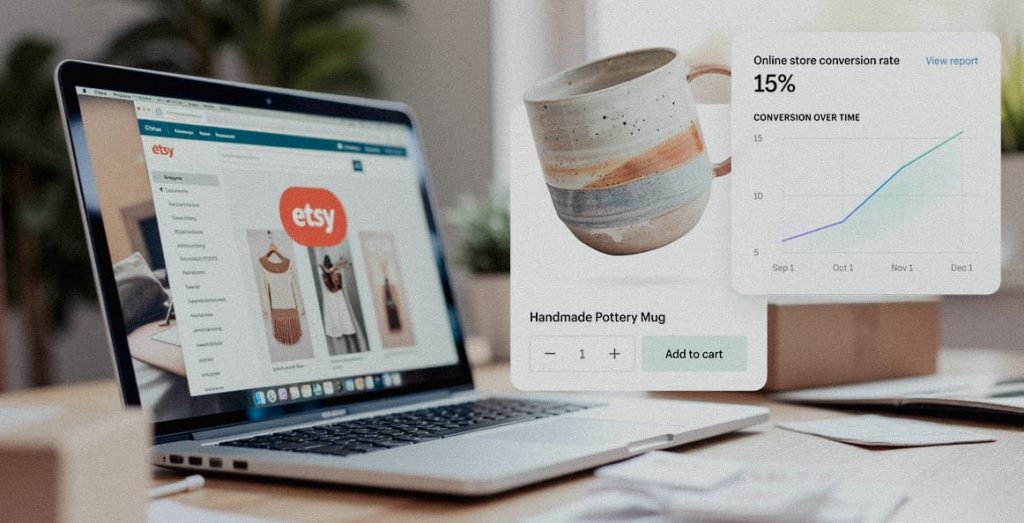
Etsy Support
You want help when you run into problems or have questions about your shop. Etsy gives you several ways to find answers. You can use the Help Center, which has articles and guides for common issues. You can join the Etsy Community Forum to talk with other sellers and share advice. If you need direct help, you can reach out by email or phone. Etsy’s support works well for basic questions and troubleshooting.
Etsy Support Options:
Help Center with guides and FAQs
Community Forum for seller discussions
Email support for direct questions
Phone support for urgent issues
📝 Tip: Start with the Help Center for quick answers. The forum is a good place to learn from other sellers.
Etsy’s support team responds to most requests, but you may wait longer during busy times. You handle most problems yourself using the resources available. Many sellers find the forum helpful for learning new tips and solving common problems.
Shopify Support
Shopify gives you more ways to get help. You can contact support 24/7 by live chat, email, or phone. Shopify offers dedicated support teams based on your plan, so you get faster and more personalized help. You can use the Shopify Help Center, which has step-by-step guides and tutorials. Shopify also has an active community forum where you can ask questions and share experiences.
Shopify Support Channels:
24/7 live chat for instant help
Email and phone support
Dedicated support teams for higher plans
Help Center with tutorials and guides
Community Forum for peer advice
Feature | Etsy Support | Shopify Support |
|---|---|---|
Help Center | Yes | Yes |
Community Forum | Yes | Yes |
Email Support | Yes | Yes |
Phone Support | Yes | Yes |
Live Chat | No | Yes (24/7) |
Dedicated Teams | No | Yes (by plan) |
💡 Shopify’s dedicated teams and live chat make it easier to solve problems quickly. You get more support options as your business grows.
Shopify’s support helps you manage your store with confidence. You get answers fast and can focus on growing your business. If you want strong support and quick solutions, Shopify gives you more choices.
Integrations
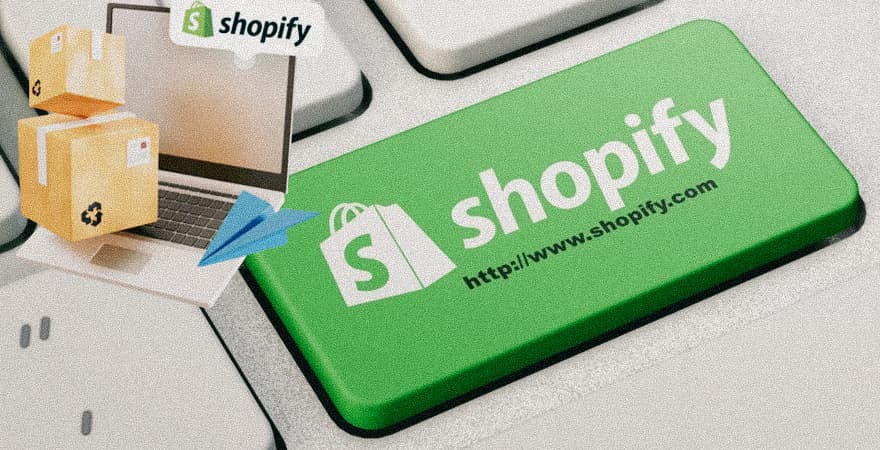
Apps
You want your store to do more. Both Etsy and Shopify let you add apps to help manage your business. Shopify gives you access to a huge app store. You can find tools for marketing, shipping, accounting, and more. Many apps help you connect your Shopify store with other platforms. You can automate tasks, track inventory, and improve your customer experience.
Etsy also supports third-party apps, but the choices are fewer. Most apps focus on syncing your Etsy shop with other platforms or helping you manage orders. Here are two popular apps that help you connect Etsy with other stores:
App Name | Rating | Free Plan | Key Features |
|---|---|---|---|
4.7 | Yes | Syncs product details, imports listings, manages inventory and orders. | |
Etsy Marketplace Integration by CedCommerce | 4.8 | Yes | Syncs inventory, manages personalized orders, adds tracking numbers. |
Etsy Integration & Sync by Digital Product Labs: Syncs product details, imports listings, manages inventory.
Etsy Marketplace Integration by CedCommerce: Syncs inventory, manages personalized orders, adds tracking numbers.
Shopify stands out because you can choose from thousands of apps. You can customize your store to fit your needs. Etsy keeps things simple, but you have fewer options for adding new features.
🛠️ Tip: If you want more ways to grow your store with apps, Shopify gives you more choices.
Multichannel
Selling on more than one platform helps you reach more customers. Shopify makes this easy. You can connect your store to Amazon, eBay, Facebook, and other channels. You can manage all your sales from one dashboard. Shopify also gives you tools for international sales, like multi-currency checkout and shipping app integration.
Etsy focuses on its own marketplace. You sell to buyers who visit Etsy. You do not get built-in tools to connect with other sales channels. You rely on the Etsy Seller app for most tasks.
Here is a quick comparison:
Feature | Shopify | Etsy |
|---|---|---|
Multichannel Integration | No external integrations; sales within Etsy | |
International Sales Tools | Multi-currency checkout, shipping app integration | Lacks advanced tools for international sales |
Sales Management Tools | Robust tools for product management and sales | Fewer tools, relies on Etsy Seller app |
Shopify gives you more power to sell everywhere. Etsy keeps you inside its marketplace. If you want to grow your business across many channels, Shopify offers more flexibility.
🌍 Note: Multichannel selling can help you reach new customers and boost your sales. Shopify makes this process simple and effective.
Scalability
Growth Potential
You want your business to grow over time. Shopify gives you strong tools for scaling up. You can add new products, expand to different markets, and connect with more sales channels. Shopify supports high-volume stores and lets you customize your site as your brand grows. You can use advanced apps and automation to handle more orders. Many top sellers on Shopify see steady growth. Over the past year, Shopify sellers experienced a 10.77% year-over-year growth rate.
Etsy works well for small shops and creative sellers. You get a built-in audience, but your growth depends on marketplace trends. Top sellers on Etsy saw a -24.68% year-over-year growth rate. This means many Etsy shops faced challenges in expanding their sales. You may find it harder to scale if you want to reach new markets or sell more products.
Platform | Year-over-Year Growth Rate |
|---|---|
Shopify | 10.77% |
Etsy | -24.68% |
📊 Shopify helps you grow your business with more tools and better results for top sellers.
Long-Term Use
You need a platform that supports your business for years. Shopify gives you flexibility to change your store as your needs evolve. You can switch themes, add new features, and connect with other platforms. Shopify’s support and integrations help you manage a growing business. You can build a brand that lasts.
Etsy offers a simple setup for creative sellers. You rely on Etsy’s marketplace and audience. If you want to keep your shop small, Etsy works well. If you plan to expand, Shopify gives you more options for long-term success.
Shopify supports large stores and growing brands.
Etsy fits small shops and creative businesses.
💡 Choose Shopify if you want to scale up and build a lasting brand. Etsy works best for small, creative shops that want a simple setup.
Dropshipping Etsy vs Shopify
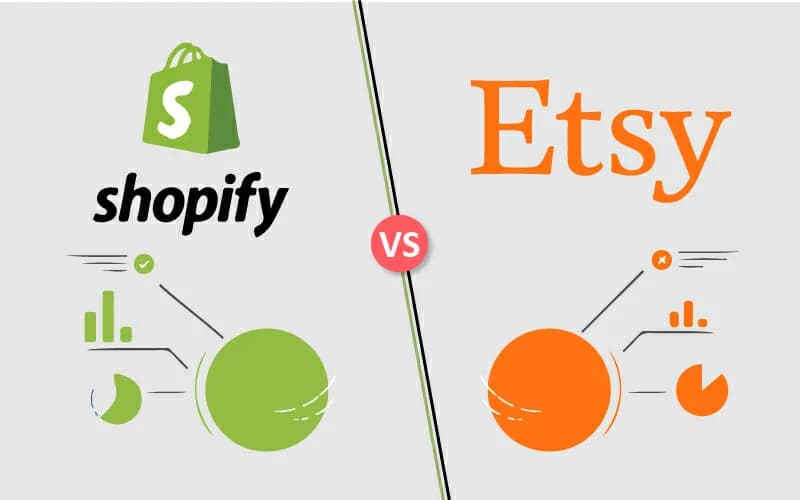
Dropshipping has become a popular way to run an online store without holding inventory. When you compare dropshipping Etsy vs Shopify, you see big differences in how each platform handles this business model. You need to understand these differences before you choose where to build your shop.
Dropshipping on Etsy
Etsy focuses on handmade, vintage, and craft supply items. The platform has strict rules about what you can sell and how you can source your products. If you want to use dropshipping on Etsy, you face several restrictions.
Key Points About Etsy’s Dropshipping Policy:
All items must be handmade, vintage, or craft supplies.
You cannot resell items in the Handmade category.
Every product must be your original design or customized by the buyer.
You cannot use dropshipping suppliers as production partners.
AliExpress dropshipping is not allowed.
Etsy expects you to create or design your products. If you outsource production, you must list your production partner and explain their role. You cannot simply buy ready-made products from a supplier and ship them to customers. If you break these rules, Etsy may remove your listings or suspend your shop.
Here is a table that summarizes Etsy’s dropshipping and product policies:
Category | Details |
|---|---|
Prohibited Items | Alcohol, tobacco, drugs, certain animal products, hate items, illegal items, pornography, violent items |
Dropshipping Policy | Dropshipping directly from Etsy is not typically allowed; permission from the seller is required |
Handmade Requirement | All items must be handmade, vintage, or craft supplies; reselling is prohibited |
Production Partners | Items must be original designs or customized by the buyer; no ready-made products from dropshipping suppliers |
Consequences of Violations | Listings may be removed, and shops can be suspended for repeated infractions |
🚫 Note: Etsy’s rules make it hard to use traditional dropshipping. You must stay creative and follow the handmade requirement.
Dropshipping on Shopify
Shopify gives you much more freedom with dropshipping. You can build your own store and choose from many dropshipping suppliers. Shopify does not limit you to handmade or vintage items. You can sell almost any legal product, and you can automate your business with apps.
Why Shopify Works Well for Dropshipping:
You can connect your store to suppliers like Oberlo, Spocket, or Printful.
You can sell a wide range of products, from clothing to electronics.
You can automate order fulfillment and inventory management.
You can brand your store and control the customer experience.
Shopify’s flexibility makes it easy to scale your dropshipping business. You can test new products, reach global customers, and use marketing tools to grow your sales. Shopify supports multichannel selling, so you can expand to other platforms as your business grows.
Here is a quick comparison of dropshipping Etsy vs Shopify:
Feature | Etsy | Shopify |
|---|---|---|
Allowed Product Types | Handmade, vintage, craft supplies | Almost any legal product |
Dropshipping Policy | Highly restricted, must be handmade | Fully supported |
Supplier Integration | Not allowed | Wide range of apps and suppliers |
Branding Control | Limited | Full control |
Automation | Minimal | Extensive (apps, integrations) |
💡 Tip: If you want to start a dropshipping business with fewer restrictions, Shopify gives you the tools and freedom you need.
How to Choose: Dropshipping Etsy vs Shopify
When you compare dropshipping Etsy vs Shopify, think about your business goals. If you love making handmade products and want to reach buyers who value creativity, Etsy may fit your needs. If you want to run a scalable dropshipping business with many product options, Shopify is the better choice.
Use Etsy if you create your own products and want to join a creative marketplace.
Use Shopify if you want to automate your business, choose from many suppliers, and build your own brand.
📣 Remember: Shopify’s flexibility makes it the top choice for most dropshipping businesses. Etsy works best for makers and artists who want to sell their own creations.
Pros and Cons
Etsy Pros & Cons
When you choose Etsy, you join a marketplace with a strong reputation for handmade and unique items. You get instant access to a large customer base, which helps you reach buyers who already trust the platform. Etsy handles payment processing, so you do not need to set up your own system. You also find a supportive community and resources to help you grow your shop.
Pros:
Trusted platform with an established reputation
Immediate access to over 90 million active buyers
Simple payment processing handled by Etsy
Supportive seller community and educational resources
However, you face some challenges. You must follow Etsy’s strict policies, and breaking the rules can lead to suspension. You have limited options for customizing your shop, which makes it hard to build a unique brand. Competition is tough because many sellers offer similar products. You also get limited access to customer data, making it difficult to build direct relationships. Recent fee increases have frustrated many sellers and can impact your profits.
Cons:
Strict policies and risk of suspension
Limited branding and customization options
High competition among similar products
Limited customer data access
Fee increases can reduce profits
Shopify Pros & Cons
Shopify gives you full control over your online store. You can customize your site, build your brand, and scale your business as you grow. The platform offers a user-friendly interface and strong support, making it easy to manage your shop. Shopify works well for many business models, including dropshipping Etsy vs Shopify comparisons.
Pros:
User-friendly interface for easy management
High scalability for growing businesses
Extensive support and resources
Full control over branding and customization
You should also consider the downsides. Shopify charges monthly subscription fees, which can add up, especially if you choose higher-tier plans or add extra features. The platform does not provide email hosting, so you need a third-party solution. Some users find data management and ownership options limited.
Cons:
Monthly fees can become expensive
No built-in email hosting
Some limits on data management
Tip: Compare the pros and cons of each platform to see which fits your business goals best. If you want a ready-made audience, Etsy works well. If you want more control and room to grow, Shopify stands out.
Choosing between Etsy and Shopify depends on your business needs, budget, and growth plans. You get easy access to buyers and simple setup with Etsy, while Shopify gives you full control and better scalability.
Factor | Etsy | Shopify |
|---|---|---|
Fees | Lower for high revenue | |
Branding | Limited | Full control |
Scalability | Niche growth |
Many successful sellers use both platforms. You should weigh costs, user experience, and your long-term vision before deciding. Try one or both to see which fits your goals best.
Whatever platform you choose, DailyFulfill is here to support you with reliable dropshipping fulfillment. Contact us for any help along the way!
DailyFulfill is your Best Dropshipping Partner
- 24/7 customer support
- 100% quality guarantee
- 1400+ professional clients
- 8400 m² fulfillment center
- 59960+ Sku of products
- 12+ dropshipping experience

